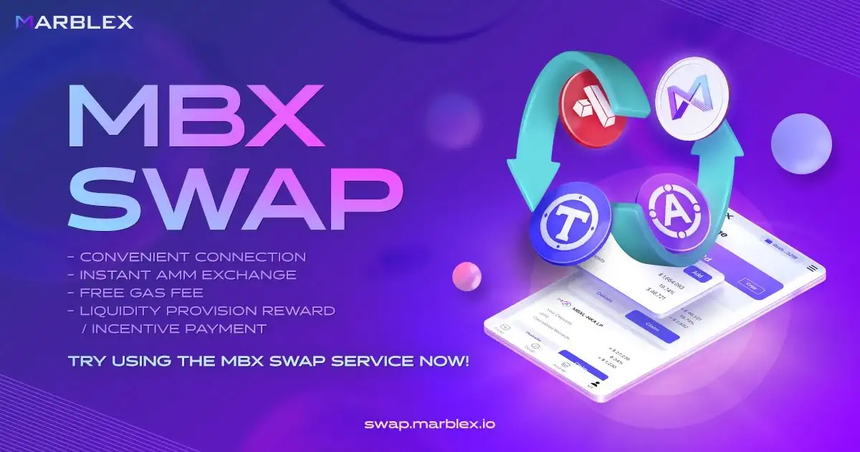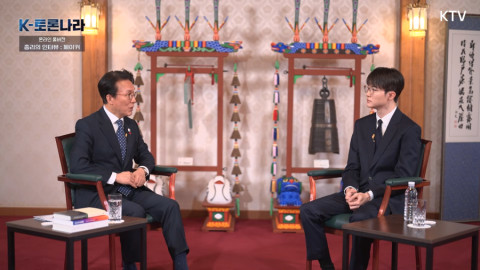Reason FCT and MBXL tokens are needed
|
FM (In-game resource) → FCT (Game token) → MBXL (Bridge token) → MBX (Public cryptocurrency) → Cash |
If you play KOF Arena with a controller linked, you can gain FM. To cash FM, you have to exchange the FM into FCT, exchange the FCT into MBXL, trade MBXL into MBX, and then sell the MBX in cryptocurrency exchanges. Looking at the process, you could think if all those steps are necessary. However, MBXL and FCT aren’t just middle tokens — there’s a sure necessity for them to exist.

The bridge token MBXL is a token needed to divide the Marblex ecosystem from the outside world. The blockchain network used by MBX tokens is also used by many other tokens made by other companies. Since it’s not an individual space, you can’t move things or add more functions as you please.
That’s why a separate network exclusive to the Marblex ecosystem is needed. That way, it’s convenient to create an independent function or service, while the load is light and fast. MBXL can be traded directly into MBX in a 1:1 ratio while it connects the outside common network with the Marblex ecosystem.

If MBXL is necessary to avoid getting affected by other companies or ecosystems, FCT is needed to minimize the effect of other games within the Marblex ecosystem.
Many other games are serviced in the Marblex ecosystem, and more games will be published in the future. Let’s say all of these games mine MBXL directly. If it’s really easy to mine MBXL in one game, there could be inflation. This would affect the users that mine in KOF Arena.
That’s why a separate game token that can be traded into MBXL is needed. The exchange ratio between the game tokens and MBXL must be calculated separately by each game. If mining game tokens in one game is really easy, just the game token and MBXL exchange ratio can be adjusted to minimize the effect on other games.

The process of trading FM into FCT is also necessary. FCT is a cryptocurrency that exists in the blockchain network, so the FCT transactions are recorded in the blockchain. If you mine FCT directly from the game, whenever users mine FCT or use it, it has to be recorded in the blockchain. If that happens, too much traffic will affect the network, and the network will get slow and heavy. You shouldn’t forget that the same network is used by other games besides KOF Arena.
That’s why FM is necessary, which you can gain and use in the game conveniently. Also, the fee that occurs when you trade FM into FCT gives an advantage when FCT is traded into FM, and this helps prevent the FCT value from dropping.
Like this, MBXL and FCT aren’t just inconvenient middle processes — they take the role of dividing the inside and outside of an ecosystem while keeping the game apart from other games within the ecosystem. Also, there is a financial investment product using MBXL and FCT: the ‘MBXL-FCT LP investment’.
MBX Swap service and the Liquidity Pool

Before explaining the liquidity pool, we must discuss the MBX Swap service.
When we want to cash FM, we need to open the MBX Wallet and exchange FCT into MBXL. This exchange uses the MBX Swap service. The MBX Swap service was released just a few days before KOF Arena was released. After this service was provided, there was a big change in trading game tokens and MBXL.

This image is the MBXL ↔ Game token exchange screen before the MBX Swap service. It’s similar to trading stocks in the stock market or dealing MBX in cryptocurrency exchanges. Back then, to sell a game token, you had to decide the amount and price of the game token and make an order, and then wait for someone to take the deal.
If there’s someone who made an order with the same price first, that person’s order has to be processed first for your turn to come around. If there’s someone who made a much better offer, those offers are prioritized. If you want to make a deal right away, you have to take another person’s offer, even if it’s a loss.
The old way was a system where you had to wait for someone who would make the deal with you, and to make a quick deal, you had to make an unfavorable deal.
However, with the MBX Swap service, there is no need. The trade is made through the system in a ratio calculated with a program. If it was a trade dealt between people before, it is now using an exchange run by a computer.

There is one downfall to the computer exchange style. Let’s think of withdrawing money from an ATM. If there isn’t enough cash in the ATM, we can’t withdraw any money. In the same way, the exchange also needs to have the capital to make the trade.
The capital needed to run the exchange is called Liquidity Pool. That being said, LP investing is a financial product investing in the exchange operation capital.

Profit of LP investing — Exchange fee and incentives

The main profit of LP investing comes from the exchange fee. When people exchange FCT into MBXL, there’s a 0.3% exchange fee, and the investors take 0.15% of that fee by their share.
However, this isn’t enough to make a 1% APR, so Marblex has an additional incentive interest rate. As a result, there’s about a 250% APR of MBXL-FCT LP, and when exchange occurs frequently, it even surpasses the 300% mark.
In other words, most of the APR from LP investing an incentive from Marblex — the interest from the exchange fee isn’t much.

Why Marblex offers incentives — LP size and stability of the exchange rate
The reason Marblex gives incentives to make people invest in LP is to keep the FCT/MBXL trade ratio stable.
We have to consider how the exchange calculates the MBXL-FCT exchange ratio. The exchange calculates the ratio depending on how much MBXL and FCT are left in the LP. It compares the value of the remaining MBXL x FCT before and after users use the exchange and keeps it constant.
For example, let’s say a user wants to exchange 4 FCT into MBXL when the invested amount in LP is 200 FCT + 100 MBXL. The amount of FCT in LP will become 204 FCT, including the 4 FCT the user wants to exchange. Then, a portion of the 100 MBXL must be distributed to the user. The original value of FCT x MBXL is 200 x 100 = 20,000. The 20,000 value must be maintained after making the trade. As 20,000 ÷ 204 = 98.04, the user receives 1.96 MBXL, which is the remaining amount after subtracting 98.04 from the original 100 MBXL.

Like this, if users trade FCT and MBXL, the amount of FCT and MBXL remaining in the LP changes. This means that the exchange ratio changes when the next user uses the exchange. If the next user wants to trade 4 FCT into MBXL, following the aforementioned example, there will be 204 FCT + 98.04 MBXL remaining in the LP. Calculated in the same way, the next user will receive 1.89 MBXL, which is less than the 1.96 MBXL the first user took.
The ratio change depends on the amount of exchanged assets and the size of the LP. When exchanging the same amount, the smaller the LP, the bigger the exchange rate change. On the other hand, if the LP is big, the exchange affects the exchange rate less. Think of dropping one ink drop in a cup and a large pool.

This time, let’s say there’s 50 FCT + 25 MBXL in the LP. The FCT:MBXL ratio is the same as in the aforementioned example, but the size is 1/4. In this situation, if a user wants to trade 4 FCT, they only get 1.85 MBXL. The next user would only receive 1.6 MBXL. Both users got much less than the first example of when the LP was larger, and the exchange ratio change was much bigger.

If the exchange ratio rises or drops drastically in a short period of time, users get anxious. That’s because the value of FM rises and drops in the blink of an eye. That’s why Marblex gives investors a large amount of incentives to maintain the pool, and to decrease the exchange ratio change.
How to invest in the Liquidity Pool

|
1. Connect to swap.marblex.io 2. Select the Pools menu 3. Log in with MBX Wallet account 4. Select Add from MBXL-FCT 5. Insert the amount of MBXL/FCT you want to deposit |
To invest in LP, you need to deposit both types of currency that you need in the exchange, and when you do, the value of the two currencies in cash has to be the same. For example, if you want to deposit $100 worth of MBXL, you have to deposit $100 worth of FCT as well. That way, the exchange rate can be maintained while expanding the LP.

When you deposit money in LP, there is no fee. The deposited assets can be withdrawn whenever, and there is no withdrawal fee either.
The reward from LP investing is distributed in MBXL tokens and is stored separately. You can simply click a button to move it to your wallet, and there is no fee for that either. If you want to re-invest your reward in LP, you can exchange half of the MBXL into FCT to pair the MBXL-FCT and deposit it in the LP. By re-investing your reward, you can make the simple interest into compound interest.

The reason for loss?
Up to now, investing in LP could seem similar to keeping a savings account in the bank in terms of gaining interest. However, like any investment, there can be a loss. That being said, we need to know why the loss could occur.
The first case would be the decrease in the value of MBX. MBXL is a token that is exchanged in a 1:1 ratio with MBX, and to cash FCT, you have to exchange it into MBX. If the value of MBX drops, the cash value of the deposited amount in LP also drops.
The next case would be when there is too much FCT compared to MBXL — when the FCT/MBX exchange rate drops. When people invest in LP, they make a profit when users trade FCT into MBXL. The users would receive MBXL from the LP where people invested in.
If people keep exchanging FCT for MBXL, the MBXL in the LP reduces while FCT increases. When you withdraw your assets and exchange FCT into MBXL, the total amount of MBXL you have will be less than what you invested. If the MBX value is the same before and after your deposit, there will be as much as the MBXL decreased in the LP.
So there can be a loss when ① the MBX value drops, ② if the FCT/MBX exchange rate drops. On the other hand, if the MBX value rises, or people exchange MBX into FCT so that the FCT/MBX exchange rate rises, you could gain more profit than just the exchange fee.

Sort by:
Comments :0







